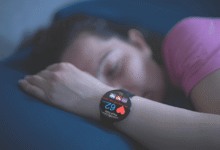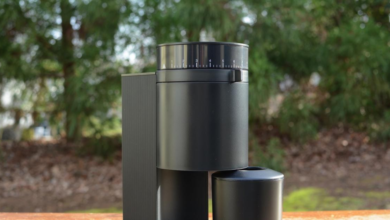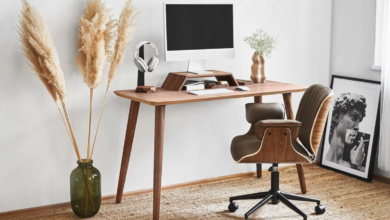Yale Assure Lock 2 review: The do-everything smart lock

It comes in a wide range of configs and finishes, with support for all the major smart home platforms.
Everybody has varying amounts of interest in home automation, but I’d contend that installing a smart lock is one of the greatest and most effective methods to improve your house. And the Assure Lock 2, Yale’s newest smart deadbolt, is simple to use, quick to install, and compatible with all the main smart home platforms (including the recently finalized Matter protocol). Additionally, there is a considerable probability that the gadget will blend in with the style of your home because it comes in a variety of finishes and configurations. It is, in many respects, the all-purpose smart lock.
The basics
The Assure Lock 2 is offered in four basic configurations and three finishes (black suede, bronze, and satin nickel): a $160 keypad version with physical buttons that can be specified with or without a physical keyhole, and a slightly more sophisticated $180 touchscreen model that, like the keypad version, supports keyed and key-free setups. The lock comes equipped with Bluetooth connectivity by default, but Yale provides modules that can add compatibility for WIFI, Z-Wave, and Matter for individuals who desire greater integration with smart home ecosystems. (Note: Starting at $240, there are versions of the lock that already have the WIFI module installed. Although Yale claims that the Assure Lock 2 is completely compatible with the Matter standard, its Matter modules aren’t anticipated to be offered until the beginning of 2023).
Yale Assure Lock 2
The keypad variant with WIFI and a dedicated keyway will be the focus of this review because it provides the best balance of old-fashioned practicality and cutting-edge sophistication.
Setup and installation
Although installing a deadbolt could seem scary to some, there is really not much need for anxiety. According to Yale, the Assure Lock 2 is made to fit most doors used in the United States and Canada, supporting boreholes up to 2 34 inches in diameter on slabs as thin as 1 34 inches. Even a slightly handy city slicker like myself had no issue screwing everything down in under 30 minutes because all you need is a Phillips head screwdriver. And that also involves a little amount of customer service troubleshooting I had to conduct.
The initial step is to take out your outdated deadbolt. The Yale Access app (which you’ll need later anyway) has a fairly extensive step-by-step instruction with videos and visual aids that you can use after that, or you can use the installation manual that comes with the product (which you’ll need to do later anyway). The box also includes a paper template to assist you in determining the size of your door, which is crucial because, depending on its precise measurements, you may need to use many packs of screws in various sizes.
Mounting the Door Sense module, which enables the Assure Lock 2 to determine whether your door is open or closed, is the following step after installing the deadbolt. You have the option of attaching it to the door frame close to the lock, which only calls for a few of the provided screws and some already-applied double-sided tape. Alternately, you might choose for a more seamless installation by concealing the sensor inside the door’s frame. But to hollow out a hole for the Door Sense’s magnet, you’ll need a 5/8-inch drill bit.
The only time the system faltered was during calibration, when the lock tried to latch and unlatch itself to determine when the door was properly fastened. Unfortunately, despite the fact that my prior deadbolt was an August WIFI Smart Lock (owned by Assay Abloy, just like Yale), my latch’s depth was a little too shallow, preventing the lock from extending all the way. But when I called Yale’s customer service, a helpful representative named Victor asked me to email a picture of my lock, which allowed us to solve the problem. And after slightly expanding the latch cavity, everything functioned flawlessly.
In use
The Assure Lock 2 really shines once everything is operational. Similar to a Runco rotisserie oven, it may be set and left alone. Using the Yale Access app, you can distribute numerous entrance codes and invite visitors as necessary. The app keeps track of who entered using the PIN you gave them if they use it. You might never need to use the keypad, though, if you utilize the auto-unlock feature. This is due to the fact that if you travel more than 200 meters from your house, it uses Bluetooth or Wi-Fi to estimate when you will return so it may automatically unlock as you approach. Even if the auto-unlock option on Android devices comes with a warning that it I never experienced any troubles using either a Samsung Galaxy Z Fold 4 or Google Pixel 6. While certain gadgets can be a touch slow on occasion.
Simply push the Yale logo to lock your door when you’re done. Or, if you want to be even more lazy, turn on the auto-locking option. I have mine set to lock one and a half minutes after the door closes, which gives me just enough time to leave, go to the building’s garbage chute, and come back without the deadbolt activating again. However, it is not long enough for someone to safely enter after me without being seen. You can also unlock your door by asking Google, Alexa, or Siri thanks to the deadbolt’s compatibility for voice assistant integration. (Those concerned about voice controls being a security risk should not be since the system always requests a PIN before using spoken commands. So if someone you don’t trust is nearby, avoid using them.)
The options for unlocking don’t end there, though; if you have an Apple Watch, you can just move your wrist close to the lock and use Bluetooth to gain access. As always, if you prefer a more manual method, you can just open the app. Most significantly, during testing, I never once failed any of these alternatives. Therefore, unless you really want to, you might never need to use a physical key again (though, I still like having one as a backup in case of emergency).
The Assure Lock 2’s redesigned design has the added benefit of making it around 30% smaller than previously. Additionally, compared to something like August’s locks, it has a more conventional design, saving you from having to explain how to open the door when guests want to go (which happens a lot more often than you might imagine). The Assure Lock 2, however, might not be a perfect choice for renters or those with tight HOAs because you have to replace the entire deadbolt rather than adding a device on top of your current hardware like with other of Yale’s competitors.
Additionally, Yale even offers a service called Keyed Alike if you want to upgrade to a new lock but really don’t want to change out all of your keys. However, I didn’t do this myself. You can send Yale the code for your present lock’s cylinder for a modest cost ($4), and when your new deadbolt is delivered, it will function with your current set of keys.
Battery life
According to Yale, the Assure Lock 2 with WIFI has a battery life of three months or less, depending on how frequently you enter and exit your home. And although I was first a little miffed that the lock is powered by four single-use AA batteries, Yale claims that the business isn’t allowed to use rechargeable batteries because of fire safety laws. If you absolutely want to, you can use your own rechargeable batteries, but you’re responsible for any problems that arise. Oh, and for anyone who chooses a keyless model, you may tap a 9-volt battery on the connections on the underside of the casing in the case that the lock’s batteries run out while you’re outside, giving the lock just enough power to let you in.
Wrap-up
Yale has produced a smart deadbolt that essentially covers all the basics with the Assure Lock 2. You can choose from four various configurations and finishes. There is also a good probability that it will fit your home perfectly because it is compatible with a wide variety of common door sizes. Other smart locks therefore typically lack the versatility of both keyed and keyless alternatives as well as support for all the main smart home protocols, even while they provide features like auto-unlock and the ability to detect when your door is ajar (WIFI, Z-Wave and Matter). My favorite aspect of the lock is that it does what any truly fantastic smart home device should do, which is to get out of the way. after it’s You don’t really need to bother about it again once it’s installed and set up way you prefer. If you’re considering purchasing a new smart lock, the Assure Lock 2 should be at the top of your list because it makes it simpler to monitor and manage who enters and exits your home.











